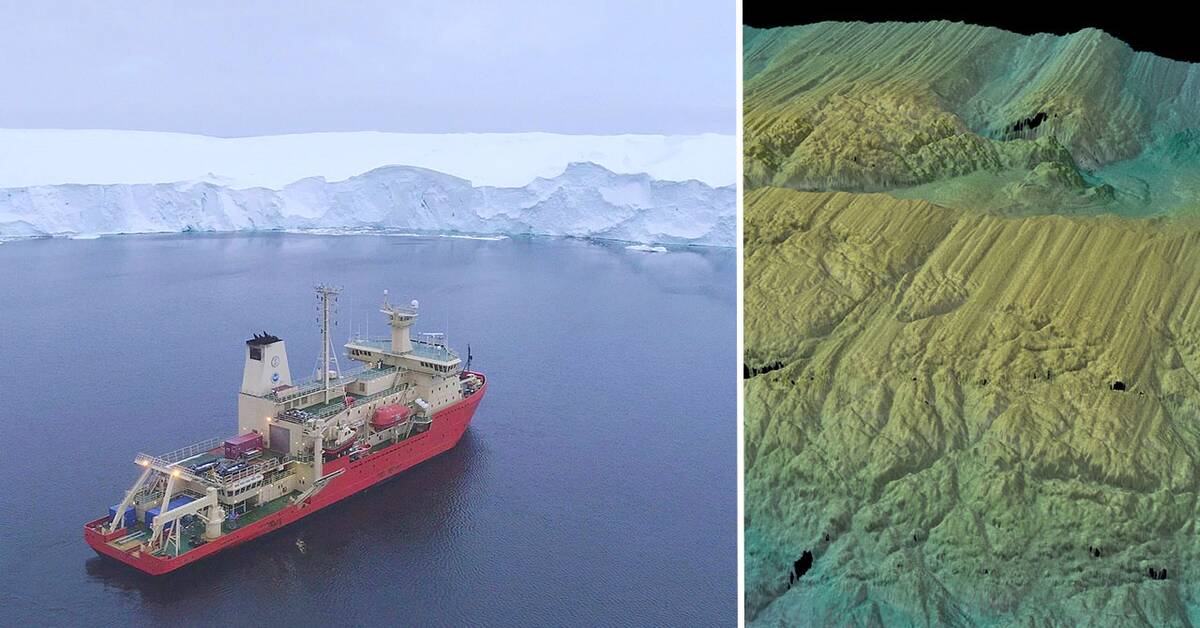All around Antarctica is a band of glaciers that flow into the water.
In a 2019 expedition, scientists for the first time managed to send a small underwater robot into the darkness under the ice to examine the seabed just outside the edge of the Thwaites Glacier.
Named after the god of the deep sea
The robot is named after Ran, the god of the deep sea in Norse mythology, and is equipped with an advanced sonar that maps the mountains and valleys of the seabed.
Ran discovered a hill on the sea floor and on its ridges a distinct pattern emerged.
- It looked like a trolley had rolled on the seabed, says Anna Wåhlin who is a professor of oceanography at the University of Gothenburg and who participated in the expedition.
Double the speed
Now it turns out that this pattern reveals how fast the glacier has retreated earlier in history.
In a new study, Anna Wåhlin and her colleagues can now show that at one point approximately 200 years ago, the ice receded at twice the speed compared to today, namely 2.1 km per year.
- It is warm seawater under the ice that hollows out the ice and causes it to melt.
The sea water around Antarctica probably had the same temperature as today, even though the global air temperature has risen, says Anna Wåhlin.
Bergknalle made it go faster
The research group now suspects that the reason why the glacier shrank faster then than today is that a hundred years ago the glacier slid down a cliff.
This means that the glacier can get such a jolt again with faster ice melting as a result.
- Once it gets over the hill, it goes fast.
We are now approaching a new such hill and then the retreat of the ice can begin to accelerate again, says Anna Wåhlin.
The doomsday glacier is in danger of disappearing
Scientists all over the world watch over the Thwaites Glacier, also known as the Doomsday Glacier.
It is twice as large as the surface of Småland and if it completely melted away, so much water would be released that the sea level would risk rising up to half a meter.
- We know that humans affect the climate and it does not help the glaciers that the air temperature is getting warmer at the same time, says Anna Wåhlin.
Play the video above to see the close-ups of the seabed.

